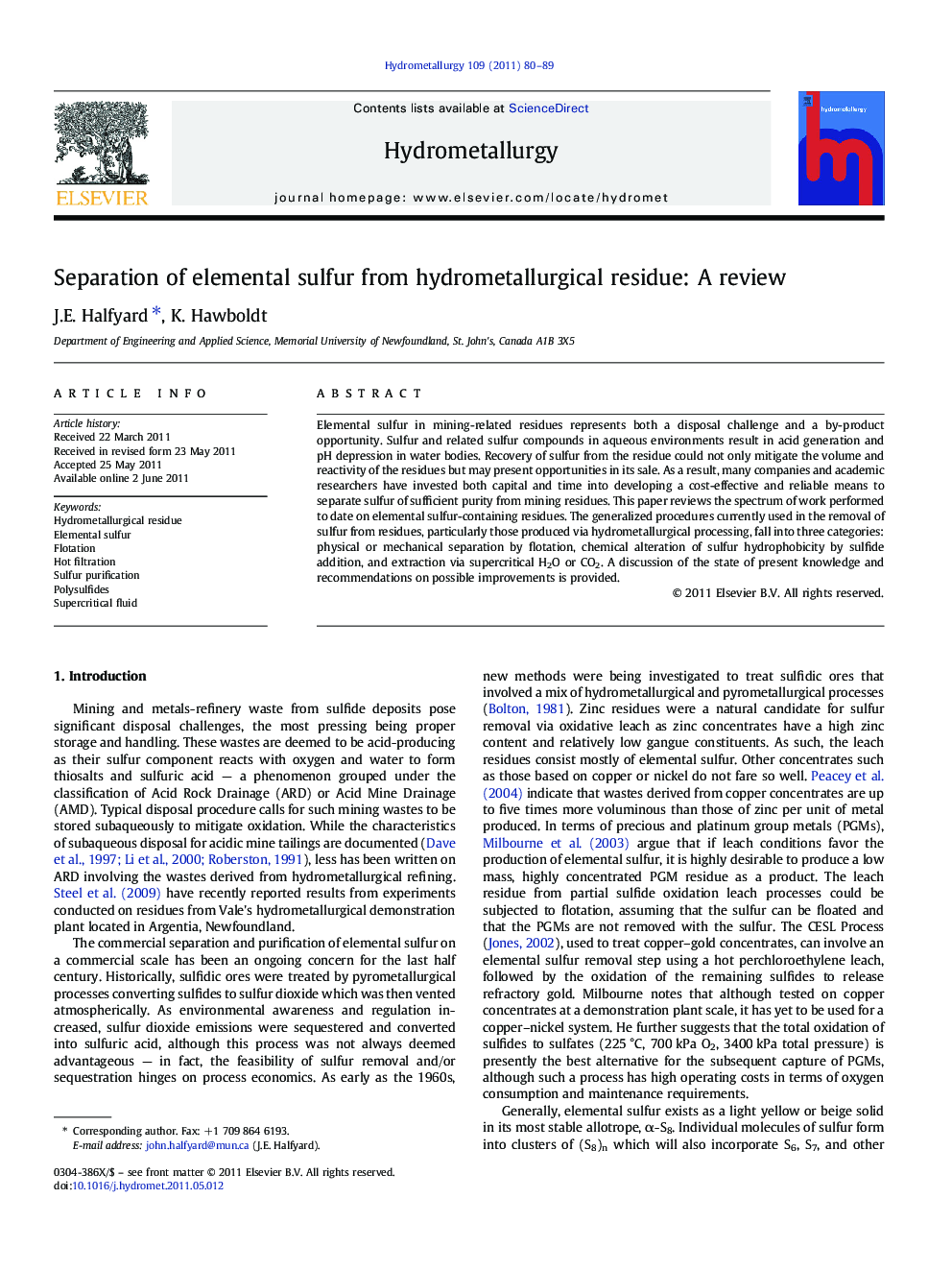| Article ID | Journal | Published Year | Pages | File Type |
|---|---|---|---|---|
| 212644 | Hydrometallurgy | 2011 | 10 Pages |
Elemental sulfur in mining-related residues represents both a disposal challenge and a by-product opportunity. Sulfur and related sulfur compounds in aqueous environments result in acid generation and pH depression in water bodies. Recovery of sulfur from the residue could not only mitigate the volume and reactivity of the residues but may present opportunities in its sale. As a result, many companies and academic researchers have invested both capital and time into developing a cost-effective and reliable means to separate sulfur of sufficient purity from mining residues. This paper reviews the spectrum of work performed to date on elemental sulfur-containing residues. The generalized procedures currently used in the removal of sulfur from residues, particularly those produced via hydrometallurgical processing, fall into three categories: physical or mechanical separation by flotation, chemical alteration of sulfur hydrophobicity by sulfide addition, and extraction via supercritical H2O or CO2. A discussion of the state of present knowledge and recommendations on possible improvements is provided.
► A commercial process for separating sulfur from zinc concentrate residue is described. ► Residue constituency significantly effects the effectiveness of sulfur removal. ► Academic work on sulfur separation from hydrometallurgical waste is reviewed. ► A discussion on the future of sulfur separation research is offered.
